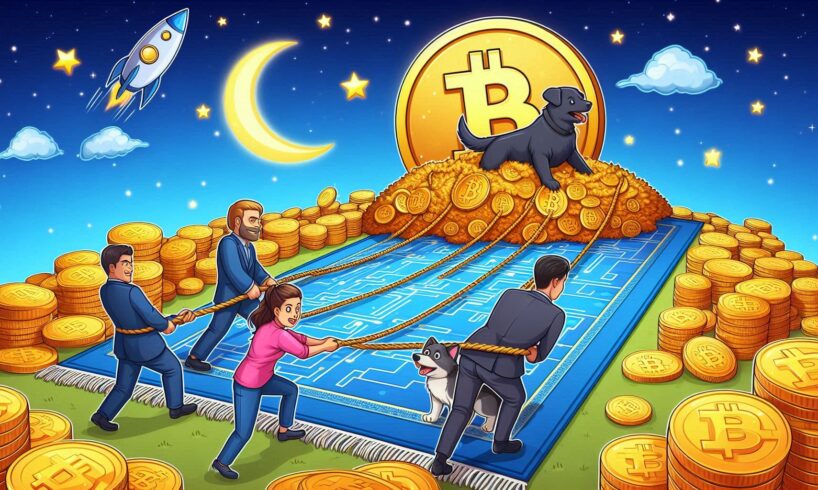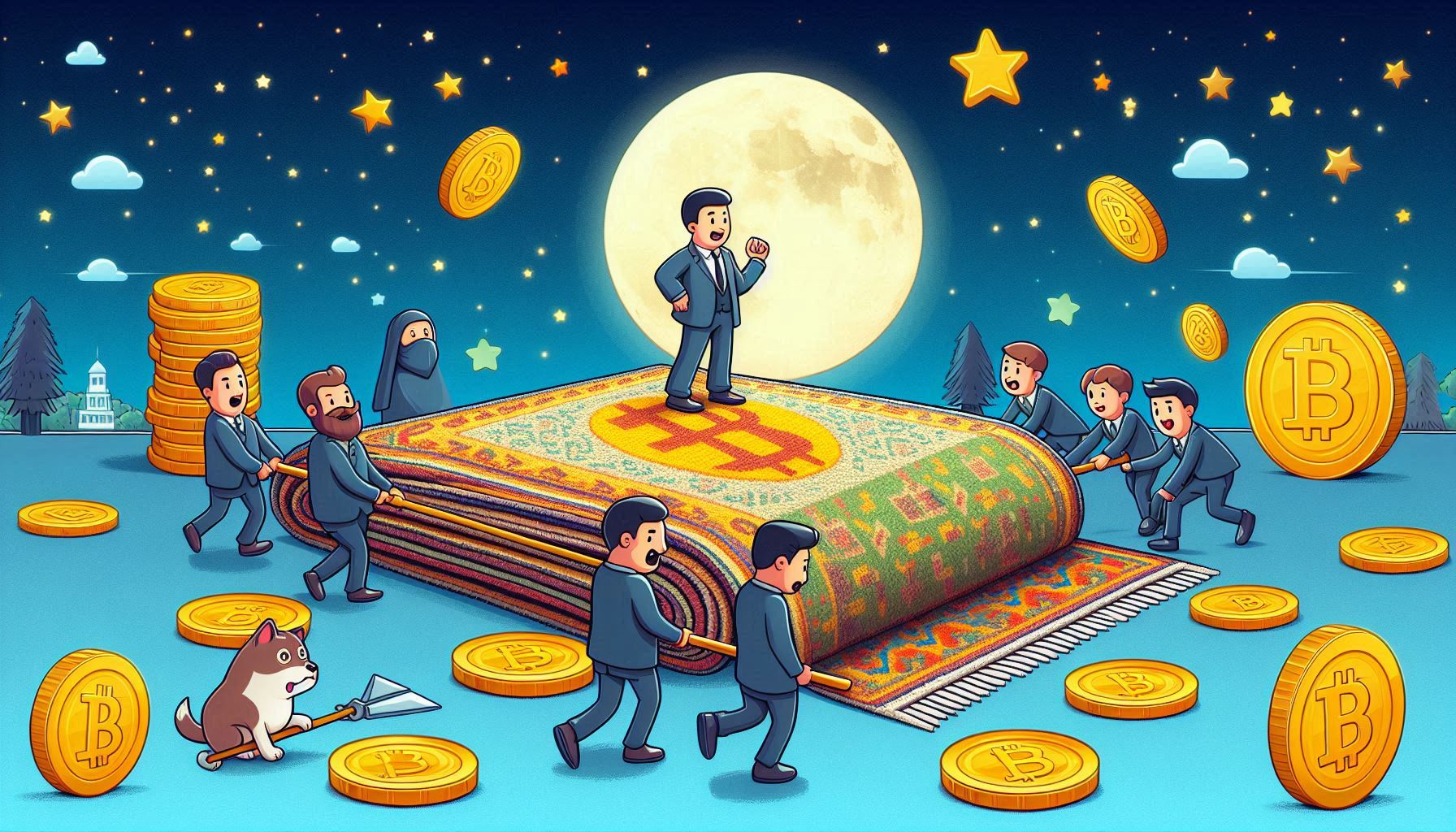
While innovation in cryptocurrency is leaping forward in terms of development of decentralized finance and blockchain technology, this does open up various opportunities for both investors and developers. Along with these bright prospects comes an ugly dark side: scams and fraudulent schemes designed to dupe unsuspecting participants into the fray. Amongst the most nefarious of these schemes is carpet pulling.
A rig pull is that type of exit scam in which the developers of a project create something that appears to be a cryptocurrency or a defi token. They only create enough hype for their investors once they get them on board and all the liquidity created, withdraws in a flash, leaving the investors with worthless tokens and at huge financial losses. It has become pretty common in the crypto space, but yes, there are ways that you could identify them before you become a victim. Here’s how you find rig pull in crypto and prevent losing your investment.
-
Lack of transparency from the team
A great crypto project will have some level of transparency, not to say complete transparency, while the members have public profiles that list their credentials and an excellent reputation amongst other crypto enthusiasts. Another thing is, rpbull schemes are run by anonymous or pseudonymous developers with no verifiable track records. Some danger signs among them are:
No team details: If the project doesn’t disclose any developers’ names, backgrounds, or experience, then be wary.
Anonymous or fake identities: Developers can even hint at them hiding something by simply using a pseudonym and not providing any kind of real-life links to past work. Fake LinkedIn profiles or social media accounts are red flags.
No third-party audits: Real projects typically hire other security companies to audit their code, ensuring there are no backdoors or malicious intent.
Tip: Before investing in any project, do your own research on the team. Is it just a bunch of people who have contributed to other real projects? Do they have a reasonable presence online that is credible?
-
Ridiculously unusually high and nonsensical returns.

The saying “if it’s too good to be true, it probably is” rings especially true in the crypto arena. One doesn’t need much analysis: Ponzi schemes and other fraudulent schemes often promise astronomical returns to attract investors. Which is an enormous red flag for a rug pull. Example:
Unrealistic APRs or APYs: Accounts that display blatantly over-the-top annual percentage rates (APRs) or annual percentage yields (APYs), even if they are as high as 1000% can be something to watch out for. That’s a claim no one can realistically make.
Guaranteed Profits: Any cryptocurrency project that promises one profits regardless of the state of the market should draw suspicion. Cryptocurrency markets are unstable; no investment can be guaranteed.
Tip: Compare the returns promised by a project with the returns offered by established, reputable crypto platforms. The potential for higher returns always depends on being balanced with the intensity of the risk taken.
-
Locked or Inaccessible Liquidity
In DEXs, the tokens can be traded using liquidity pools. Liquidity is significant because there are minimal price drops when investors want to buy or sell tokens. In a rig pull, there will always be a draining of the liquidity pool with the intention of leaving investors unable to sell their tokens. It is therefore important to watch for these symptoms:
No liquidity lock-in: Legitimate projects typically involve locking liquidity in for a term using a third party. Funds cannot be withdrawn early. So if a project does not lock in liquidity or locks it in for less than a term, this may represent a red flag.
Developer has too much liquidity: The risk of carpet pulling is much more likely if liquidity of a project is mainly controlled by the development team. Decentralized projects should divest ownership of liquidity across a broad base of participants.
Tip: Find an explorer like EtherScan or BscScan to check the liquidity pool status of the project. Be certain that liquidity is truly locked in there for a minimum period and is not dominated by a few wallets.
-
Vague or Fuzzy White Paper Roadmap.
This involves having an essential well-defined roadmap to a project, which implies and assures long-term vision in addition to a commitment to growth. Should the roadmap of a project either be nonexistent or vague, then it might indicate that the developers are not serious about achieving long-term success. Some things to look out for include:
White papers that are overly general: White papers should clearly define the project goals, technical details and their plans of implementation. White papers that have the buzzword mentality but lack specifics suggest that they try to create hype without delivering substance.
Missing Roadmap Milestones: Projects that promise features but failed to meet deadlines or miss important roadmap milestones raise red flags. Inconsistent or delayed growth can be a precursor to an exit scam.
Tip: Projects with roadmaps detailing and being transparent about what to expect, with clear timelines, and seven development phases hold more promise.
-
Token Distribution: Developers Controlled and Wheel Wallets
Token distribution within a project is always an indicator of its fairness and legitimacy. In rug pulling, developers usually own most of the total token supply; they dump all of the tokens into the market. Causing it to break and collapse. Look for the following:
Developers hold a substantial part of the tokens. The risk of market manipulation is high, in case the developers hold a significant part in the total issuance of the tokens. A wide pool of investors prevents this problem with fair token distribution.
A few wallets hold a significant majority of the tokens: Similarly. The price manipulation risk is higher for high value tokens; mostly held by a few wallets. These whales can drop their holding anytime, and the price of the token may slump.
Tip: Research token distribution by using Token Sniffer or EtherScan. Ensure ownership is not centralized, which is, not a few wallets holding way too many tokens.
-
Social media red flags: Too much hype, not enough substance.
Social media presence is often a sign of legitimacy. Thus, if the community appears to be alive, and good engagement can be traced here. It may be well expected that the project itself is legitimate. Beware, though, of over-the-top hype surrounding a project with little actual substance behind it. Red flags to look out for include:
Increasing presence on social media: A project can be a scam if the Twitter, Discord, or Telegram group has no real members but only bots, fake accounts, or spam. Verify whether the followers are real, and the quality of the conversation is good.
In other words, aggressive marketing campaigns and projects which indulge in much spending on paid promotions and partnerships without proper updates of the actual product or the development progress meant getting quick money from investors rather than building a sustainable product. Can be focused more on.
Suppressing critics: If a social media moderators for a project start banning all users who keep asking tough questions or pointing out inconsistencies, that’s a very bad sign. Good projects welcome constructive criticism and engage with their community openly.
Tip: Research their community channels. You want to see transparent communication coming out from the team and genuine interactions between customers. Projects that focus only on creating hype without backing it up with substance is a no-go.
-
Arbitrary Code Updates to the Contract
Deceptive rig-pull schemes typically suggest
malicious updates of the cryptocurrency or project smart contract managing the token. The malicious code updates may allow developers to create new tokens, freeze trading, or drain liquidity without the expressed consent. Be on the lookout for these technical flags:
No audit of a contract: It should be verified that the smart contract of the project has been audited by a professional third-party company before investing. The audited code is less likely to include vulnerabilities or backdoors.
Unverified contract code: If the code of a project’s contract isn’t open source or hasn’t been verified in blockchain explorers. Then it becomes pretty hard to find out whether it is secure or not. Lack of transparency may hint at malicious intent.
Tip: The smart contract of the project has to be audited and open source. Look through blockchain explorers to ensure the contract has not been tampered with in some fishy manner.
Also Read: Tech Company CEO Arrested in $366 Million Crypto Scam: Unraveling the Web of Deception
The outcome
Unfortunately, getting ripped off is part of the cruel reality of the crypto space. But if one is diligent and does proper research, he can protect himself against such scams. Therefore always do your research scrutinizing the team, tokonomics, liquidity status, and technical aspects of the project. Knowing what to be looking for can drastically minimize the risks and help you make even more educated decisions.
Now, the sexy allure of immediate short-term gains may be tempting, but responsible investment requires patience, research, and a healthy dose of skepticism.







